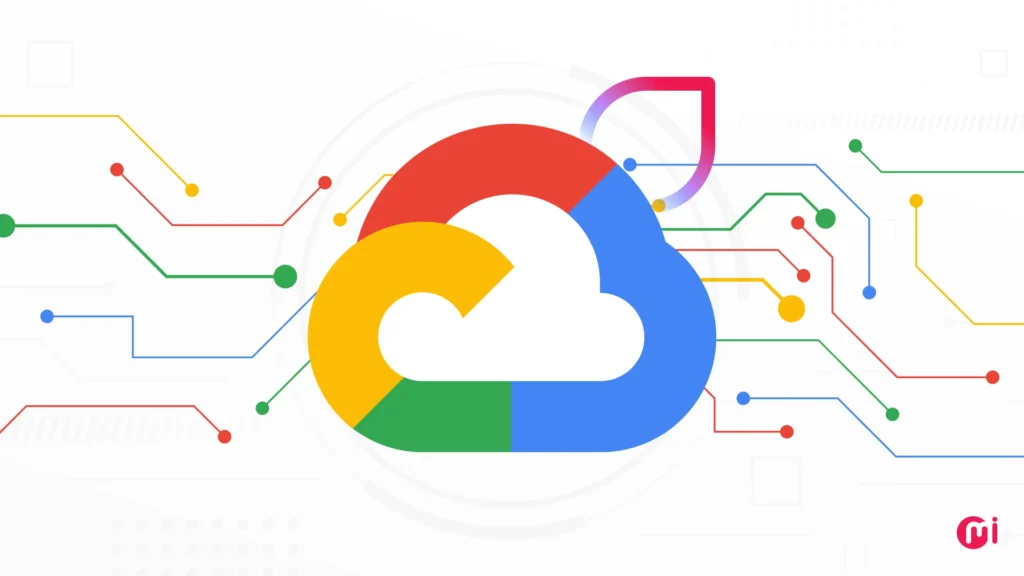Google introduced Vertex AI with the aim of providing a platform that can accelerate AI innovation for businesses, regardless of their team’s expertise in AI. This blog post is curated to provide insights into what Vertex AI offers, its features, functionality, use cases, and more.
AI has become a standard practice for businesses, driving transformation in operations. From enhancing customer experiences to automating processes and making informed decisions, AI integration and ML development services are essential for companies to remain competitive.
However, building and scaling AI solutions can be challenging, costly, and time-consuming. This is where Vertex AI comes into play.
Vertex AI is a unified machine learning platform that allows users to train, deploy, and scale ML models, as well as customize large language models (LLMs) for AI solutions. Owned by Google Cloud, Vertex AI integrates seamlessly with Google Cloud infrastructure, making it efficient for ML developers to train and deploy models at scale. The platform consolidates essential tools needed for the ML workflow, helping businesses accelerate their AI initiatives.
Key Features of Vertex AI
Vertex AI offers a range of features that enable users to unlock the full potential of the platform. From pre-trained models to MLOps tools, Vertex AI brings together everything needed to build, scale, and optimize ML models in one place. Some key features include:
Generative AI Models and Tools: Vertex AI provides access to over 200 foundation and generative AI models, enabling businesses to choose, customize, and deploy models efficiently.
Unified Machine Learning Workflow: Vertex AI offers an integrated environment to manage the entire ML lifecycle, promoting collaboration between data scientists, ML engineers, and DevOps teams.
Built-in MLOps Tools: Vertex AI includes MLOps tools that support model versioning, experiment tracking, automated retraining, and real-time monitoring for efficient management of AI projects.
AutoML Capabilities: Vertex AI’s AutoML tools allow users to build high-performance models without deep ML expertise, simplifying the model creation process.
Model Garden: The Model Garden provides a repository of pre-trained models and APIs, speeding up experimentation and innovation.
Agent Builder: Vertex AI includes Agent Builder for building AI-powered multi-agent systems, supporting retrieval-augmented generation and integration with external tools.
Scalable and Managed Infrastructure: Vertex AI is built on Google Cloud’s secure and scalable infrastructure, ensuring reliable and cost-effective AI workloads.
How Vertex AI Works
To understand how Vertex AI functions, it’s essential to grasp the machine learning workflow for building, deploying, and scaling ML models. The workflow includes data preparation, model training, evaluation, deployment, serving, and monitoring, ensuring a seamless process from start to finish.
Data Preparation: Data is ingested from various sources, cleaned, transformed, and stored for easy access and processing.
Model Training: Models can be trained using AutoML or custom training options, allowing users to choose the approach that best suits their needs.
Model Evaluation and Iteration: Models are evaluated for performance metrics, compared, and optimized using automated hyperparameter tuning.
Model Serving: Trained models can be deployed for real-time or batch predictions, with options for online and batch serving.
Model Monitoring: The performance of deployed models is continuously monitored to ensure they perform as expected.
Use Cases of Vertex AI
Vertex AI is utilized across industries for various applications, including predictive analytics, generative AI, supply chain optimization, healthcare solutions, personalized customer experiences, and more. Some impactful use cases of Vertex AI include:
Healthcare: Predictive health analytics, clinical decision support, and operational forecasting.
Retail: Personalized product recommendations, demand forecasting, visual search, and AI-powered chatbots.
Manufacturing: Predictive maintenance, supply chain optimization, and production process optimization.
Finance: Fraud detection, credit scoring, customer retention modeling, and AI chatbots for banking.
Benefits of Vertex AI
Vertex AI offers several benefits, including faster development of ML solutions, enterprise-grade security, scalability, flexibility, and access to Google’s proprietary ML models. Some key advantages of Vertex AI include:
Unified Platform for End-to-End ML Workflows: Vertex AI streamlines the ML workflow from data preparation to model deployment, all within a single platform.
Infrastructure and Scalability: Vertex AI integrates seamlessly with core Google Cloud services, ensuring robust performance and scalability.
Open-Source Support: Vertex AI supports popular ML frameworks, enabling flexibility and customization in ML workflows.
Streamlined Development and Deployment: Vertex AI simplifies the development and deployment process, enabling rapid creation and deployment of ML models.
Seamless Data-to-AI Integration: Vertex AI seamlessly integrates with Google Cloud’s data services, facilitating easy access and processing of data for AI applications.
In summary, Vertex AI is a powerful platform that simplifies the entire machine learning workflow, making it easier for both beginners and experts to build and manage ML models. With features like AutoML, pre-built pipelines, and custom model support, Vertex AI empowers teams to innovate and deliver impactful solutions at scale. Whether automating workflows or fine-tuning models, Vertex AI provides the tools needed to turn data into actionable insights.

